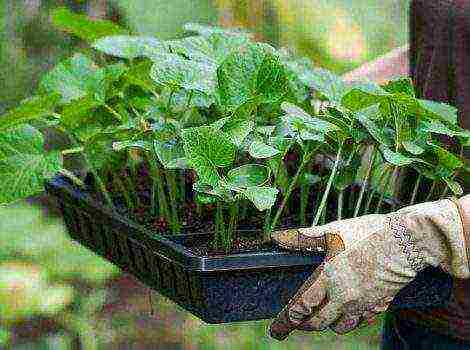Content [show]
The best precursors for carrots are cucumber, early cabbage, potatoes, tomatoes, onions, annual grasses, seam turnover, and in field crop rotation - winter crops on black fallow. It is not recommended to place carrots after sunflowers, which have common diseases with them.
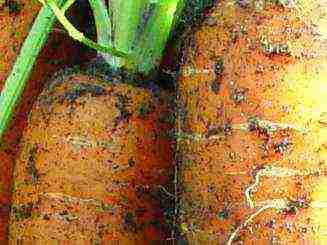
Soil preparation depends on the predecessor. After the early-releasing field of predecessors, the soil is cultivated as a semi-fallow. First, LDG-10 is peeled. LDG-15 to a depth of 6-8 cm, after two weeks fall plowing is carried out with plows with skimmers PLN-6-35, PLN-5-35, PLN-4-35 to a depth of 27-30 cm. Shallow soils - to the depth of the arable layer with simultaneous deepening. After early autumn plowing, cultivation or disking with harrowing BDT-3 + BZSS-1.0 is carried out, under which glyphos, zero, glialka (4-8 kg / ha) are applied to combat rhizomatous weeds. The planning of the field is carried out by planners P-2,8, P-4, PA-3. In winter, snow retention is carried out, early harrowing is carried out in two tracks with heavy tooth harrows (BZTS -1.0) or medium (BZSS - 1.0).
Carrots are responsive to organic and mineral fertilizers. To obtain a root crop yield of 40-50 t / ha, VNIIO recommends applying up to 30 tons of humus or compost, depending on the cultivation of the soil, mineral fertilizers: on podzolic soils - nitrogen up to 90 kg / ha of phosphorus and potassium, each up to 100 kg / ha; on leached and typical chernozems - nitrogen up to 90 kg / ha, phosphorus up to 100 kg / ha, potassium up to 90 kg / ha. The preparation and application of mineral fertilizers is carried out with machines ISU, PE-0.8 G, SZU-20, RUM-8, and organic-ROU-8.
Organic and 2/3 of phosphate-potassium fertilizers are applied as the main fertilizer in the fall, and 1/3 of phosphate-potassium and nitrogen fertilizers are applied in spring and with top dressing. All operations must be carried out in the best agrotechnical terms with the smallest gap between soil preparation and sowing. Before sowing, the seeds are calibrated on seed cleaning machines OVS-10, K-231, PSS-2.5, disinfected with hot water (temperature 48 ° C) for 20 minutes, divided by specific gravity in 3-5% sodium chloride solution, bubbled for 18-20 hours. After bubbling to accelerate growth and increase yields, the seeds are placed in a combined solution containing 1% crystallone and microelements (0.1% manganese sulfate and 0.05% zinc sulfate, boric acid, ammonium molybdenum acid and copper sulfate). The seeds are kept in solution for a day at a temperature of 18-22 ° C.
For 1 kg, 1 liter of solution is consumed. Immediately before sowing, the seeds are dried in the sun in a thin layer, then disinfected with TMTD (6-8 g / kg of seeds). The sowing time and the depth of seeding play an important role in ensuring the normal plant density of 0.8 - I million / ha. The optimal sowing time for early production is at a soil temperature of 4-5 RS and a moisture content of 70-80% HB, and for long-term storage, carrots are sown 2-3 weeks later. The seeding rate of seeds is 4-6 kg, the seeding depth of seeds on light soils is up to 3 cm, on heavy soils - 1.5-2 cm.Sowing is carried out with seeders SKOSSH-2.8, SKON-4.2, SO-4.2, SO -5.4 or precision seeders SUPO-6A, SUPO-9A. On a flat surface, they are sown in an ordinary way with row spacing of 45 cm and a strip method - according to the scheme 40 + 40 + 60 cm, 55 + 55 + 70 cm, 8 + 62 cm; on ridges - 5 + 27 + 5 + 27 + 76 cm, 32 + 32 + 76 cm, 45 + 45 + 90 cm, on ridges with row spacing 60 cm.At the same time with sowing, rolling is carried out with smooth water-based (ZKVG-1.4) or ring (ring-toothed) rollers KKN-2,8.
Carrot sowing care consists in combating weeds, pests and diseases, loosening row spacings and in rows, watering and feeding.
After sowing, 3-4 days before the emergence of shoots, to destroy the crust and destroy the weeds, pre-emergence harrowing is carried out across the crops with mesh (BSO-4) or rotary (BRU-0.7) harrows. In this case, not only the crust and weeds are destroyed, but also the thinning of crops is carried out,
To control weeds on carrot crops, herbicides are used: prometrine (gezagard) - 2-3 kg / ha (4 months before harvesting), racer - 2-3 l / ha, stomp - 3-6 l / ha, targa - 1 -2 l / ha, targa-super - I -2 l / ha. centurion - 0.2-0.4 l / ha. Preparation, application and incorporation of herbicides is carried out by a system of machines: APR "Temp", ON-400-1. POU, KPS-4 + ZBZSS or FPU-4.2 or KFO-5.4. The consumption of the working solution of herbicides is 400-500 l / ha. Herbicides are more effective when applied to wet soil.
The first inter-row tillage is carried out 7-10 days after sowing (with the designation of rows) to a depth of 6-8 cm with a protective zone of 8-10 cm, the subsequent ones - by 10-12 cm with a protective zone of 10-12 cm.
Thickened crops, when 1-2 true leaves are formed, are thinned across the rows with medium or light harrows. Harrows destroy 20-25% of seedlings in one pass. Harrowing is carried out in the afternoon to reduce plant damage. With sparse seedlings, harrowing is excluded. The distance between plants in a row for varieties of the Nantes type should be 2-3 cm, for other varieties 3-4 cm. Density of standing 0.8 - 1 million plants per 1 ha. Carrots respond well to top dressing. The first feeding is carried out after thinning at the rate of 30-50 kg / ha of ammonium nitrate, 50 kg / ha of superphosphate and potassium chloride; in the second top dressing - at the beginning of the formation of root crops, up to 100 kg / ha of potassium chloride is applied.
To destroy weeds and incorporate herbicides, cultivators are used - KRN-4.2, KOR-4.2, KGF-2.8, FPU-5.4, KOR-5.4. The number of inter-row treatments depends on the weediness of the fields, the mechanical composition of the soil and ranges from 2 to 4.
To obtain stable yields of carrots, it is necessary (in the active layer of 30-50 cm) to maintain soil moisture of 70-80% HB. In dry weather, carrot crops are watered 3-4 times with an irrigation rate of 300-400 m3 ha. Watering is stopped 2-3 weeks before harvesting to avoid cracking of the root crops.
For harvesting carrots with a tramline of 1.4 m, crust-unproductive machines MMT-1, EM-P are currently used. The machines extract root crops from the soil, load them into nearby transport 2PTS-4 or into containers, which are sent to sorting lines PSK-6 or LSK-20 to separate impurities and non-standard root crops. Standard root vegetables are loaded into containers or boxes and sent to the consumer or for storage. In recent years, more promising harvesters with a tractor track of 1.8 m - the MUK-1.8 combine - have been used for harvesting root crops. In farms with small sown areas of carrots, beet lifters SNU-ZR, NSSH-2M, PM-4, etc., are used, with which root crops are buried, and then they are manually selected, cut off and immediately sorted, rejecting non-standard, atypical root crops.
For bunch products, carrots are harvested selectively, when the root crops reach a diameter of 1.5 cm.
According to GOST, standard carrot root crops should be fresh, unfaded, whole, intact, ugly, with a shape and color characteristic of the variety, with a diameter of 2.5-6 cm (bunch carrots at least 1.5 cm), the length of the remaining leaf stalks is no more than 2 cm ...
Depending on the variety, agricultural technology and growing area, the average yield of carrots ranges from 20 to 40 t / ha, and advanced farms receive up to 50-70 t / ha.
Our production experiments (1981-1985) on the introduction of industrial technology for growing carrots of the Shantenet 2461 variety in the Kruglinsky state farm of the Michurinsky district of the Tambov region showed that in our conditions it is possible to consistently obtain a carrot root crop of 40 t / ha.
Read about this on the website:
Carrot photo
Carrots are a labor-intensive culture, yield 30-100 t / ha. With the use of a complex of care machines, labor costs can be reduced several times.
Soil cultivation. The best soils for carrots are floodplain, chernozem, medium and light texture. The predecessors are early ripe cabbage, cucumber and potatoes.Autumn cultivation begins with peeling the soil to a depth of 6-8 cm. If necessary, after peeling, the surface of the field is leveled with a planner (P-4). Plowing is carried out to a depth of 25-28 cm with a plow with skimmers (PLN-5-35) in the autumn.
Spring tillage. An early vein is harrowed with a BZTS-10 harrow, with a soil moisture content of 70-80% and physical ripeness. On irrigated soils, medium-supplied with nutrients, N - 80-120, P - 40-80, K - 60-180 kg a.i. are applied. ha 1 ha, and on non-irrigated - 20-30% less. Fertilizers are premixed using a mixer-loader ISU-4. For transportation and fertilization use the spreader RMG-4; RUM-5.
Soils with a density of more than 1.2-1.4 g / cm3 are milled or plowed to a depth of 18-20 cm without dumps, but with skimmers, then the plowed field is cultivated to a depth of 10-12 cm with an aggregate from a disc harrow BDT-3.0, tooth harrows ZBZTS-1.0 and smooth roller ZKVG-1.4. On light soils, plowing is replaced by loosening to a depth of 14-16 cm with a combined ripper-leveler RVK-3.6 with crushing of lumps and rolling.
Plants in rows, placed about 6-8 cm apart, have more colored phloem.
The length of the root crop is determined from the head (without leaves) to the place where the root diameter is 1 cm. The size of the root crop head can be small, medium and large. The most valuable varieties are those with a small head, and, consequently, with a small leaf rosette. Leaves in this case are highly productive. Root crops with the largest head are selected for the testes.
Varieties. The following varieties are suitable for harvesting with a combine: Shantenet 2461 - hardy, resistant to mechanical damage, vegetation period 115-125 days; Nantes 4 - high palatability and satisfactory keeping quality, Losinoostrovskaya 13. The tops of these varieties are 55-60 cm, cone-shaped and convenient for machine harvesting.
Sowing is carried out in April-May with calibrated seeds (0.8 mm fraction). In the south, carrots are sown in summer for winter storage. On medium fertile soils, the seeding rate is 4-6 kg / ha.
Seeds are sown to a depth of 2-3 cm. For combine harvesting, the sowing pattern is 20 × 50; 45 × 45 cm or three-line 40 × 40 × 60 cm. The seed drills SON-2.8A, SKON-4.2 and SO-5.6 with broadband single-line sowing with a row spacing of 45 cm are used. Eurotechnika supplies pneumatic precision seed drills Gaspardo ". Under irrigation conditions after sowing, the field is rolled with smooth or ring rollers across the rows.
Crop care. To reduce weediness and improve germination during the formation of a soil crust, three to four days before the emergence of shoots, harrowing is carried out across the rows with a BSO-4 mesh harrow.
With industrial cultivation technology for thinning the inputs, seedling thinners USMP-2.8A, USMP-5.4A are used or harrows across the seedlings (in rows 3-5 cm).
Chemical and biological means of protection see chapter 3.
Crops are treated with sprayers OP-1600-2 and OH-400.
To combat crust and weeds, after irrigation, 3-5 inter-row treatments are carried out with cultivators KRN-4.2, KOR-4.2 or milling cultivators KGF-2.8 and FPU-4.2, with a scheme of 55 × 55 × 70 cm they are treated cultivator KF-5.4. The first treatment is carried out after the emergence of seedlings to a depth of 5-8 cm with a cultivator with hollow paws and spherical protective discs; subsequent ones - when weeds or soil crust appear. The depth of processing is increased to 10 cm, the protective zone - up to 12 cm. If necessary, mechanized processing is combined with manual weeding in rows.
Irrigation. Carrots need irrigation when soil moisture is below 70% HB. Irrigation is carried out with DDA-100MA units at a rate of 300-450 m3 / ha in 7-8 days six to eight times during the growing season. Watering is stopped 20-25 days before harvesting if the humidity does not drop below 50-60% HB.
Harvest. Carrots are harvested using a top-lifting type root harvester (MMT-1) or ME-45 (Eurotechnika).Harvested before frost, as the frozen tops lose strength, which leads to losses and clogging of the working bodies of the harvester. Harvesting is carried out in the third decade of September when the soil temperature drops to + 80C.
Carrot tops are used for animal feed (30-40% of biomass). For the selection of tops, a pick-up loader E-062/1 with a 2-PTS-4 transport trailer and an MTZ tractor is used. The yield of root crops is 30-100 t / ha.
From the harvester, the carrots are delivered to the stationary sorting station PSK-6 or LKS-20 line. Root crops enter the hopper, from where, in a uniform flow, further to the loading elevator and conveyor-sorter, where soil admixture is separated. The remaining mass goes to the transportation and sorting surface, where the carrots are separated into fractions. Large carrots, as well as impurities, enter the bulkhead tables, where non-standard and damaged root crops are manually separated and placed on the SL 80-12 unloading conveyors, from which they enter the general flow of fines. Clods of soil and plant debris are separated. Marketable carrots are packed in bags or containers with polyethylene liners.
Carrots are a well-known and irreplaceable root vegetable, the demand for which exists throughout the year. Therefore, it is not surprising that many agricultural producers consider this plant as a source of stable income.
Carrots are a profitable crop!
Why are carrots attractive to the grower?
- retains its presentation all year round;
- there is a possibility of wholesale;
- wide sales opportunities - shops, markets, catering establishments;
- there is no need to be afraid of storing leftovers in the storage;
- low cost of cultivation and low storage costs.
Depending on the variety and growing conditions, the average crop yield is 500 c / ha with 100% profitability. Harvesting is more profitable in late autumn and early spring. In April, for example, the price of a vegetable is 4 times higher than in summer.
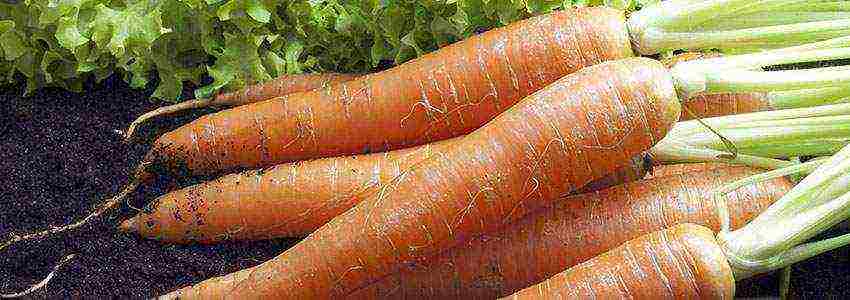
An undoubted plus is the fact that carrots are cold-resistant. Seeds are able to germinate already at +4, and the seedlings tolerate frosts down to -5. The culture is better than others adapted to air drought, and the variety of varieties and hybrids allows you to get excellent marketable products not only on light sandy soils, but also on loams and peat bogs, as well as on heavy chernozems. Carrots can be a good precursor for many vegetables.
What is needed for a carrot business?
- Land plot. It doesn't have to be hundreds of hectares. Modern technologies allow you to get up to 1 ton of vegetables per hundred square meters, so a share, a personal plot or a rented allotment will do.
- Equipment. The need for this or that inventory dictates the area of plantings. In one case, it will be enough for a walk-behind tractor, in another, a cultivator and precision seeding drills, a harvester for harvesting are needed.
- Seeds. Depending on your desires, soil climate and consumer demand in your region, you can choose suitable carrot seeds of the appropriate type in terms of ripening time, taste characteristics. The assortment of seeds is very wide, it is not difficult to choose the right variety or hybrid. Domestic seed producers can please the farmer with low prices, while foreign ones are of higher quality and germination percentage.
- Fertilizers and plant protection products. It is difficult to say what kind of fertilizers it is. It all depends on how depleted the soil is, what kind of crop was the predecessor, the ph of the soil on which you plan to grow carrots.
- Storage for finished products and reliable distribution partners.
- Staff. Even if you plan to plant seeds, cultivate, harvest with the help of technology, you will need people for protection, and also for sorting and shipping the harvested products.The larger the sowing area, the more workers you will need. The plus is that these are seasonal jobs.
How to grow a large crop of carrots?
Suppose a farm has purchased good-quality carrot seeds, but the harvest is not pleasing. Why? The trick is that the quantity and quality of the harvested root crops depends not only on the seed, but also on the cultivation technology.
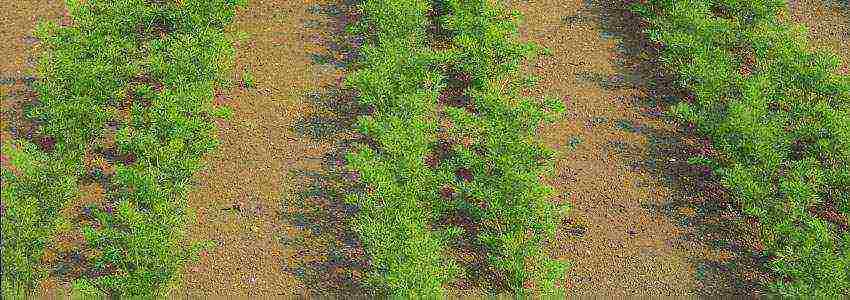
"Correct" site! Carrots do not tolerate shading, so they choose areas that are well lit throughout the day, the slope is oriented from north to south.
Soil preparation. The best predecessors are legumes and potatoes for one simple reason - these plants "clean" the field of weeds. The soil should be moderately loose and moist, but most importantly - leveled.
Compliance with sowing dates:
- beam products - before winter until the soil freezes;
- for early production - with the first opportunity to enter the field;
- for storage - from mid-spring to early June;
- re-seeding - in the southern regions, in the presence of drip irrigation.
The choice of the variety. It depends on the chosen production strategy, hybrid or variety, coated or pickled. For industrial cultivation, the following are recommended:
- "Amsterdam" - high consumer qualities;
- "Red Cor" - succeeds on heavy soils;
- "Talisman" is a fruitful variety;
- "Leander" - for storage and processing.
Hybrids, as a rule, are more tolerant to flowering and specific phytopathogens, and are more resistant to stress. In any case, the recommendations for growing each variety or hybrid are different, the main thing is not to be mistaken with the quality. Carrot seeds contain a large amount of essential oils, which causes slow germination. For seedlings to be friendly, pelleted seeds of a year ago are needed. The best quality can only be guaranteed by a large trusted supplier.
Fertilizers. It is important to take into account the high sensitivity of the root crop to organic matter. On a plot fertilized with fresh manure, carrots should be the second, or better the third crop. Phosphate and potash fertilizers can be a good top dressing. And if the vegetable is planned to be stored, the dose of potash fertilization is increased.
Some features of growing
For all its unpretentiousness, the "royal" vegetable turns out to be extremely demanding on some factors.
The degree of soil moisture: "adult" root crops are not afraid of heat, but in the initial phases of plant growth, moisture is simply necessary. Water it abundantly, but avoid flooding. During the period of root crop formation, carrots are watered no more than once a week, and two weeks before harvesting, watering is stopped.

Neighborhood with weeds: carrots are exactly the culture that absolutely cannot tolerate the neighborhood of weeds. They can be destroyed manually or using selective herbicides.
Pests: Compared to other root crops, carrots are less affected by diseases and pests than others. Its main enemies are the carrot fly and wireworm. You can get rid of them with the help of specially designed insecticides. But if you do not have too large a sowing area and you are an ardent supporter of traditional methods of treatment, then you can try some grandmother's methods. Who knows, maybe they will help you, the main thing here is to control the result and prevent an increase in the pest population to the extent that it is difficult to cope with the lesion even with professional insecticides. Here are some popular methods:
- watering with a weak solution of potassium permanganate (1 g per 5 liters of water);
- watering with a solution of ammonia alcohol (50 g per 10 liters of water).
The vegetable is rich in trace elements and vitamins, everyone knows about its benefits. Carrots are eaten every day, in various dishes, both raw and processed, in every home and in every family. You can even sell small carrots that used to be fed.This idea belongs to Michael Yurosheko, and it became so successful that a special variety Baby carrots appeared.
I wish you success and great harvests!
Growing carrots as a business is a lucrative business in the vegetable growing industry. At the same time, you will not need large investments at the stage of organizing an enterprise.
- Pros and cons of carrot growing business
- A step-by-step plan for starting a carrot growing business
- Looking for employees
- We select a land plot
- What equipment is needed for growing carrots
- We buy raw materials
- Preparation of documents required for the legal cultivation of carrots
- Choice of taxation regime
- Carrot growing technology for sale
- How much money do you need to start a business?
- How much can you earn from growing carrots?
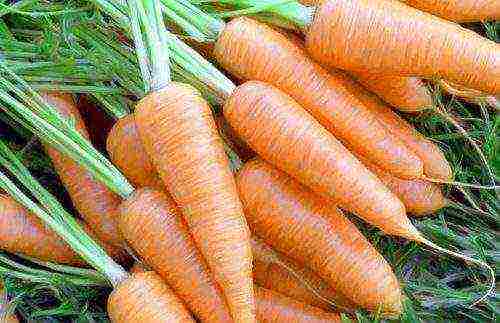
Carrots are a root vegetable that contains a large amount of vitamins and nutrients. Therefore, it is in great demand among the population.
Pros and cons of carrot growing business
It is not difficult to be engaged in the production and sale of carrots. This business has its advantages:
- High demand... Russian citizens are used to eating carrots almost every day, adding them to dishes.
- Small start-up capital.
- The unpretentiousness of the root crop... Producers reap large yields even when the weather is unstable.
This area was not without drawbacks that prevent you from earning decent money. The main ones are:
- Physical exercise. This business requires from an entrepreneur not only mental skills, but also work.
- Learning the basics of growing root crops... Without knowledge of vegetable growing, quality fruits cannot be grown. The training will take time (at least a month).
To take a high position in the market, you need to treat the cultivation of carrots with all your heart.

A step-by-step plan for starting a carrot growing business Looking for employees
Doing vegetable growing alone will not work because of the large amount of work. For the first time, it is not necessary to hire external employees. You can ask for help from relatives, acquaintances, of course, for a fee.
Also, in order to save money, you can attract schoolchildren or students who are on vacation during the summer holidays to work. You have the right to set the wages yourself. It could be part of the harvest or money. For example, 5 thousand rubles each. per month to one employee. On average, three people will be enough.
Since you will only deal with administrative duties, and all the "dirty" work will be undertaken by workers, then 45 thousand rubles. three summer months will not go in vain. Employees must prepare the soil, sow, water, protect and harvest crops.
We select a land plot
To grow carrots, you do not need a room, but a land plot is required. If you have a summer cottage, then you have the right to engage in the production of root crops on it, provided that there is enough space for planting a large number of seeds.
A more profitable option is to rent a land plot. Of course, the price depends on your regional location. In megacities, there is a problem with free land for planting, and therefore the rent will be quite high. In the provinces and former collective farms, this is not the case. The average cost of land for rent is 5 thousand rubles. per month. for 50 acres.

To take land for temporary use, contact agricultural enterprises or municipal authorities (administration).
It is important to know what was previously grown on this site. Carrots will be born if grain crops, potatoes, cabbage, tomatoes, onions grew there. It is even better when nothing has been planted on this site for several years.
Choose a place where the sun's rays fall, as carrots love light.
What equipment is needed for growing carrots
Most of the money will be spent on buying a car if you don't have one. It must be roomy to transport employees to the place of work. For these purposes, a minivan, pickup or jeep is suitable. Do not forget that the production will be located in places where there are no paved roads, so the vehicle must overcome impassable places.
Basic technological equipment:
- Motoblock. It is necessary in order to cultivate the soil.
- Hiller. It is needed to form pits.
- Seeder... With the help of it, seeds are quickly planted in separate holes.
- Digger. Workers use it when harvesting.
All this equipment will cost about 50 thousand rubles, not counting the vehicle, the price of which is from 100 thousand rubles.

You will need to transport the harvested crop to the vegetable base, to the store, to the buyer, to the basement. From 50 acres it will be possible to collect about 30 tons of carrots, depending on its varietal affiliation. A truck is suitable for transportation. You don't have to buy it. You can rent or order multiple shipments.
We buy raw materials
Seeds are used as material for growing carrots. Before planting, they must be processed. To do this, they are disinfected, then soaked and germinated. Seed preparation has great advantages: after it the carrots grow much faster (the tops emerge within two weeks instead of a month).

You can do this process yourself or hire a retiree who will happily take on this job. You can agree on a token payment in cash or food items.
For 50 acres, approximately 1.5 kg of raw materials will be required. The seeds are sold at different prices, depending on the variety. They vary within 500-2500 thousand rubles. per kg.
Preparation of documents required for the legal cultivation of carrots
The organization of almost any area of agricultural business has its own nuances that greatly distinguish this type of activity from other commercial projects. For example, most of the villagers, who know perfectly how to work on the land, but are not guided in legal matters, start their business with the sale of agricultural products, without registration, etc. They sell the surplus of the grown produce, which is absolutely legal activity. But when it comes to large volumes, no one will believe that you have "accidentally" grown "extra" 10-50 tons of carrots.
To organize and develop your carrot growing business, in the form of a farm, you need to prepare the following documents:
- application of the established form;
- an agreement on the creation of a peasant farm (peasant farm), with copies of documents of its participants;
- a copy of the passport of the head of the future farm (it will be checked against the original!);
- documents confirming the place of registration of all participants in the agricultural project;
- receipt of payment of state duty.
Within five working days, after submitting the above papers, you will be given documents on the registration of a farm, as well as a taxpayer certificate and confirmation that you are registered with Rosstat.
In addition to the above documents, you no need to apply for additional licenses or permits... But, as a rule, at the initial stage of creating a farm, many issues have to be resolved with representatives of local authorities.
Choice of taxation regime
When preparing documents for the future farming, do not forget to choose the right code for your activity and the optimal tax regime. For a farm that plans to grow carrots, of all the codes of the all-Russian classifier, OKVED 1.13 is best suited, and the optimal taxation system, in this case, is the Unified Agricultural Tax (Unified Agricultural Tax).
This regime allows farmers to pay only 6% of the profits, doing this twice a year.
Carrot growing technology for sale
| Stages | Process description |
| Variety selection | Before planting, you need to decide on the varietal belonging of the carrots. Plant several varieties to find the best option. |
| Land preparation | It needs to be fertilized. Therefore, in the fall, they begin to cultivate the soil. It is dug up, laid on top of the compost. In the spring, the earth is dug up and fertilized again. |
| Seed preparation | First, they are washed in hot water, the temperature of which is 50 degrees. This is necessary so that the layers of essential oils come off them. After that, the seeds are germinated for three days. Remember to dry them completely before planting. |
| Sowing | Before planting carrots, beds are made on the site, they are watered with water (preferably warm). After that, the seeds are planted in the pits. |
| Care | To harvest a good harvest, the beds are weeded, sprayed with chemicals from carrot flies and pests, weeds are destroyed, sprinkled with ash, dust (tobacco), watered with a solution of potassium permanganate, and onions are planted nearby. |
| Harvesting | This stage takes place in late summer - early autumn. This cannot be done alone, so business owners hire additional employees to help harvest all the carrots in a small amount of time (within seven days). |
How much money do you need to start a business?
It is possible to highlight the main costs associated with the organization and development of the enterprise, which should be included in the business plan for growing carrots.

| Land lease | Its cost is influenced by the location of the business, the condition and size of the land plot. |
| Equipment | 50 thousand rubles |
| Wage | 45 thousand rubles |
| Fare | 5-10 thousand rubles |
How much can you earn from growing carrots?
To calculate the average level of profit in a given industry, let's take the average values. For example, you have collected and sold 20 tons of carrots for 20 rubles. per kg. You will be able to gain 400 thousand rubles. If among the root crops there are low-quality ones, they can be processed and made into Korean carrots or juice. So, you can earn another 100 thousand rubles. But these 500 thousand rubles. you will only be able to get it through the difficult paths of finding clients.

There is an easier option. To do this, you can sell the product to a retailer. But the price for it will not exceed 12 rubles. per kg. As a result, you will receive about 220 thousand rubles.
There is always a great demand for carrots, so you will always find customers. Main distribution channels:
- wholesale bases;
- retailers;
- food stores;
- sanatoriums;
- restaurants;
- supermarkets.
A more profitable option is to supply goods abroad. But this is very difficult to implement.
Your revenue directly depends on the amount of carrots grown, the price per kilogram and the place of sale. You shouldn't enter this business without analyzing the market and competition in your area. In any case, selling carrots is profitable, especially for rural residents.


